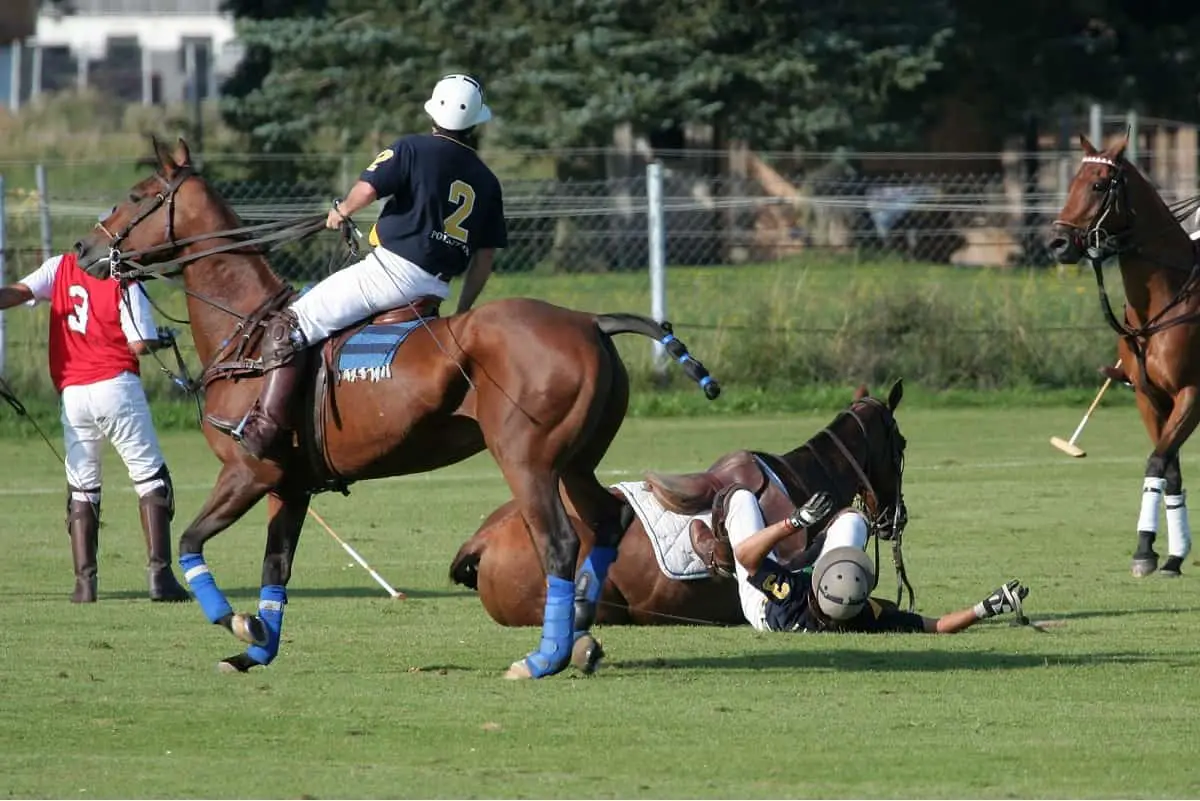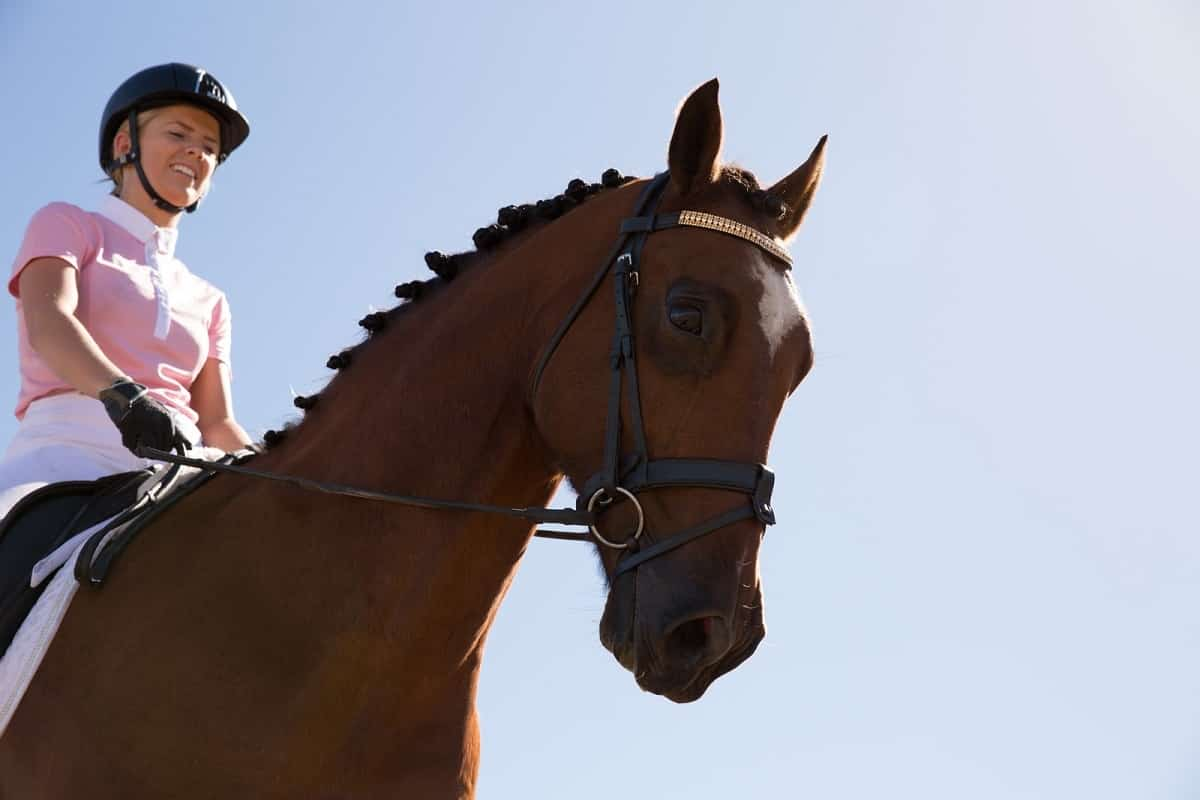Equestrian Helmet Standards
When it comes to equestrian helmets, there are specific standards for different countries, with all of them basically trying to achieve the same thing – protect your head.
Should you wear one and which certifications are appropriate for you?
When choosing a helmet, it’s important to get one that fits well and is certified to the equestrian helmet standards for use in the country where you will be riding.
Different countries often have different standards for helmets, regardless of what the helmet is specifically for.
While some riders don’t bother with a helmet, it’s a pretty good idea to do so. This is especially true for beginners but even so for veterans who have ridden so long they often forget the importance of head protection while riding.
Page Content

Disclosure: As an Avantlink and Amazon Associate, we earn from qualifying purchases. Disclosure Statement.
Horse Riding Helmet Standards
Of course, competitive horse riding is a different animal altogether (pun intended) and most, if not all, of these organizations will require the use of a certified helmet. Not only that, but training and recreational riding at most of these facilities will require the use of a certified helmet as well.
Horse Riding Helmet Standards – United States
A single helmet standard doesn’t fit all. In the United States, the go-to standard is the ASTM F1163. ASTM stands for the American Society for Testing and Materials and they take care of the written portion of the standard while SEI (Safety Equipment Institute) utilizes an independent laboratory to both test and ensure that manufacturers keep up with the standard.
However, the US also allows for Snell-certified helmets, of which there are very few, possibly because the Snell Foundation utilizes an insanely robust certification and testing system. Helmets that pass this system carry a Snell E2016 or the latest E2021 certification.
Then, there is also the little-known NOCSAE ND050 (Standard Performance Specification for Newly Manufactured Polo Helmets) which is the only standard recognized by the USPA (United States Polo Association) as it is more rigorous than other standards with a more intense testing and certification system. NOCSAE compliant helmets are mandatory for all games at USPA clubs.
Horse Riding Helmet Standards – Canada
Canada doesn’t have any standards for horse riding helmet certifications, however, that doesn’t mean that Canadians are cavorting around in horseback competitions with their heads bared to the world.
They simply use the United States and British standards for their helmets. The CSA (Canadian Standards Association) seemingly hasn’t gotten around to creating its own testing and certification system but hey, if something works from another country, why not?
Horse Riding Helmet Standards – United Kingdom
In the United Kingdom, they are referred to as ‘riding hats’ because that simply makes sense when you stop and think about it. They use a couple of different certifications across the pond, including the PAS 015:2011 and the VG1 01.040 2014-12.
The VG1 certification is the newest of the two (it’s considered to be the replacement of the PAS 015:2011), developed under British standards and later co-opted by the entire European Union.
Horse Riding Helmet Standards – Europe
As aforementioned, the EU has pretty much co-opted the VG1 01.040 2014-12 certification standard for all of their equestrian activities, in terms of competitive horseback riding, shows, and recreational horse riding.
In addition, EN 1384:2017 (Helmets for equestrian activities) is still also current and applicable within the European Union.
This content was originally published on headsdontbounce.com. If it appears on another website, it is a violation of the copyright owned by headsdontbounce.com.
Horse Riding Helmet Standards – Australia/New Zealand
According to HSA (Horse Safety Australia), their recommendation is that riders use the AS/NZ 3838 standard for equestrian helmets and that those standards meet or exceed the US ASTM F1163 standard.
However, there is also a newer standard as well. The New Australian standard is ARB HS 2012 and they are required to have an SAI Global marking. You can use either the AS/NZ 3838 standard or the newer, ARB HS standard but the newer version is considered to be a superior standard and will probably be the eventual go-to.

Scope of Testing
Each certification or standard means that the helmets have undergone a number of tests to determine their fallibility if any, and at what level.
- ASTM F1163: This testing standard is considered to be the minimum of what is required for a properly safe equestrian helmet. The helmet undergoes impact and retention tests before being frozen to a temperature of 20°F and heated to 120°F. After all of that, the poor helmet is submerged in water for 24 hours.
- VG1 01.040: This standard includes impact, retention, and visor testing (the latter only if applicable), along with penetration testing and crushing tests.
- Snell E2021: The Snell testing is all of the above tests on steroids. Snell goes above and beyond the limitations on the above tests for higher standards. It is also dropped from great heights to land on an anvil.
- AS/NZ 3838: This standard is almost identical to the ASTM F1163 standard since the literature on this standard essentially lays out the fact that this standard needs to match or exceed the American one.
- ARB HS 2012: An updated version of the above Australian/New Zealand standards, the ARB includes the same testing methods, only more rigorously applied.
- NOCSAE 050: The main difference in NOCSAE’s testing in comparison with the other standards is the composition of NOCSAE’s headform which is said to be more human-like and capable of a more realistic fit.
Summing Up
All of these different testing and certification standards amount to better and more protective headgear as the years go by and technology continues to improve.
While most places don’t have any laws in regards to recreational riding on your own property or backtrails, it’s always a good idea to wear a helmet while riding a horse, so long as you enjoy your good health and the current shape of your head.
Related Reads:

